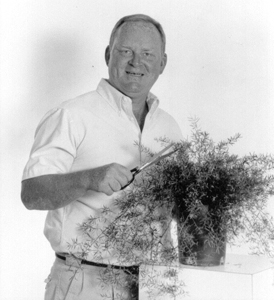LAWN CARE
 The next time the weather feels good and it puts you in the mood to do something relating to spring, think about your lawn. Remember those weeds you had last year…they are coming back! It is very important to get the jump on these broad-leaf perennials and to be aware that there is more than just one type of weed. Even grass is a weed if it is in an area where you do not want it.
The next time the weather feels good and it puts you in the mood to do something relating to spring, think about your lawn. Remember those weeds you had last year…they are coming back! It is very important to get the jump on these broad-leaf perennials and to be aware that there is more than just one type of weed. Even grass is a weed if it is in an area where you do not want it.
Start with crabgrass preventer, and get this applied as soon as possible because once it appears, it’s too late to prevent it. This should be done in March. As April is here, get ready for your first application of weed and feed. This is the broad-leaf weed killer that really takes care of most of your weed problems, including dandelions and as an added benefit, it fertilizes your yard.
Fertilization of your grass is important for a couple of reasons: one, it makes your yard very green and healthy and two, a healthy, full yard helps to smother out the unwanted weeds. The old saying, “I’m just fertilizing my weeds…” is not true. You should fertilize your yard at least 3 times per year, spring, summer and fall. The fall application is truly the most important, as this is the best time to prevent dandelions and other broad-leaf weeds by using weed and feed again, in the fall these weeds are new and young and much easier to kill.
If you need to replant grass seed in small areas or to thicken up a thinned out area of your yard, do it in April while the weather is cool and moist. Normally just tossing out hand-fulls of grass is good enough for a small job but raking the area first, to loosen up the soil could be beneficial in germinating more of the grass seed. For larger areas, you may need to rototill the yard and add lime to the soil as grass prefers a close to neutral pH. Rolling the soil to compact a little will help in making good contact to the grass seed. After compacting the soil, use a rake in one direction, putting lines in the soil and giving the grass seed a place to fall. After applying the grass seed, using a broadcast spreader (not a drop spreader), rake the soil in the other direction to somewhat bury the seed.
Water is really the key in growing good grass. Apply the water slowly using an oscillating sprinkler being very careful not to create puddles. It is better to water many times during the day as opposed to too much all at one time. You can get timers at your local hardware that will turn on and off your water several times per day so that you can move on and get other projects done. As the grass grows, back off with the water so that you do not get into mold and fungi problems. Do not cut the grass until it is well established, and even then, cut it really high.
- SURPRISE LILIES - August 12, 2016
- PRUNING PERENNIALS IN JULY - July 29, 2016
- WHOOPS — EASY FIX - July 15, 2016


